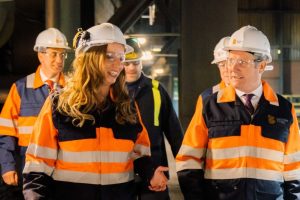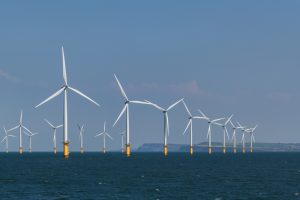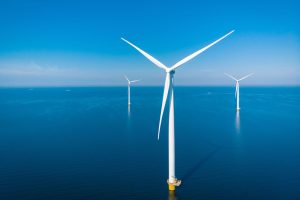Prime minister Keir Starmer has confirmed the Great British Energy (GBE) headquarters (HQ) will be located in Aberdeen with two satellite sites serving the HQ in Edinburgh and Glasgow.
Officially announced in the King’s Speech on 17 July, GBE will be an energy company “owned by and for British people” and aims to help promote energy independence and ensure taxpayers “reap the benefits” of home-grown energy. The process to form the company officially started when the Great British Energy Bill was introduced to the House of Commons on 25 July.
The Bill then passed through a second reading in parliament with a majority of 253, with MPs voting 348 to 95 in favour earlier this month.
The Department for Energy Security and Net Zero (DESNZ) has said Aberdeen has been chosen as the location for the HQ due to “the city’s world-leading engineering expertise” which it believes will kickstart a UK-wide clean energy revolution.
The two additional sites in Edinburgh and Glasgow will open once Great British Energy is up and running, to benefit from local skills and expertise. The company will be initially located in government buildings across the cities, while permanent bases are established.
An interim chief executive will also soon be appointed to take the lead on launching the new company and establishing its Aberdeen base, along with the start-up chair former CEO of Siemens UK Jürgen Maier.
University of Aberdeen Centre for Energy Transition director John Underhill heralded the decision to establish the GBE HQ to be in Aberdeen as brilliant news for the region.
He said: “This is fantastic news for the Aberdeen city region, the natural home for GB Energy providing as it does a wealth of knowledge and experience, a world-leading technical, commercial and academic skills base, and the expert supply chain honed over 50 years as Europe’s energy capital that is vital for delivering the energy transition.
"The University of Aberdeen and our Centre for Energy Transition stand ready to support GB Energy's quest to accelerate the transition. We, as part of a wider academic ecosystem including RGU and NesCol, have been on this journey with the industry and have a long history of delivering interdisciplinary research and innovative solutions that address current and future energy challenges.
“This, alongside our involvement with initiatives like the National Energy Skills Accelerator, makes us exceedingly well placed to support this new national venture and policymakers as the UK transitions to clean, sustainable energy and renewables.”
Aberdeen’s green energy credentials
Aberdeen has recently become a hotspot for green technologies and renewable energy.
Aberdeen City Council has an initiative called H2 Aberdeen, which aims to grow a hydrogen economy in the Aberdeen city region to position the city as a centre of excellence for hydrogen technology. Part of its vision is to redeploy transferable oil and gas expertise in North East Scotland.
As part of H2 Aberdeen, the city will be host to a new hydrogen facility known as the Aberdeen Hydrogen Hub, which will be a scalable green hydrogen production, storage and distribution facility in Aberdeen powered by renewable energy, delivered via a joint venture between energy giant BP and Aberdeen City Council. Robertson Civil Engineering is undertaking the civils works for the project.
Aiming to become the UK’s first net zero port by 2040, the Port of Aberdeen is also involved in projects to create the world’s first zero-emission, electric Commissioning Service Operation Vessel (eCSOV) and Cummins Inc’s project to design and build a methanol conversion kit for a high-horsepower marine internal combustion engine.
The 400MW Green Volt floating offshore windfarm successfully bid in the latest round of Contracts for Difference. This will be situated 75km off the Aberdeenshire coast and will be the first commercial scale floating offshore windfarm in Europe. Its generated power will also be used by oil and gas rigs in the North Sea.
TotalEnergies has recently announced a pilot project for its Culzean oil and gas rig in the North Sea – 230km off the Aberdeen coast – to be powered 20% by a 3MW floating offshore wind turbine.
The 50MW Kincardine offshore wind farm, off the coast of Aberdeen, was completed in 2021. It was the largest floating wind farm in the world but has now been surpassed.
Ventex, a climate tech investment firm based in Aberdeen, has recently launched an investment model to support high value Scottish startups engaged in accelerating the energy transition.
GBE initial work on renewables
Earlier in that month, RenewableUK released a report earleir about how integrating GB Energy can be implemented, highlighting some hurdles that will have to be overcome with regards to integrating with Great British Nuclear and the mission to decarbonise.
RenewableUK, in conjunction with the Crown Estate, also released a roadmap for tripling the UK’s offshore wind manufacturing capability and providing a £25bn boost to the economy by 2035.
Like what you've read? To receive New Civil Engineer's daily and weekly newsletters click here.
 New Civil Engineer Civil engineering and construction news and jobs from New Civil Engineer
New Civil Engineer Civil engineering and construction news and jobs from New Civil Engineer




Have your say
or a new account to join the discussion.